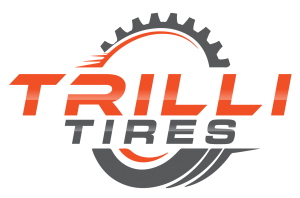In the realm of vehicle braking systems, the choice between disc brakes and air brakes is a critical decision that directly impacts safety, performance, and maintenance. As technology continues to advance, both braking systems have evolved to cater to specific needs, making them essential components across various types of vehicles. This article aims to dissect the differences between disc brakes and air brakes, explore the applications in different vehicles, and provide insights into their advantages and drawbacks.
Understanding Disc Brakes
Disc brakes, a staple in modern automobiles, function through the interaction of a calliper and brake pads clamping onto a rotating disc or rotor. This friction-based mechanism converts kinetic energy into heat, slowing down and eventually halting the vehicle.
- Efficiency and Responsive Performance
Disc brakes are renowned for their superior stopping power and responsiveness. The design allows for quick heat dissipation, preventing overheating during intense braking situations. This feature makes disc brakes highly efficient for vehicles that demand rapid deceleration, such as sports cars, motorcycles, and most passenger vehicles.
- Common Applications
- Sports Cars: High-performance vehicles rely on disc brakes to ensure precise and immediate stopping power.
- Motorcycles: The compact design and efficiency of disc brakes make them a popular choice for motorcycles, enhancing safety on the road.
- Passenger Cars: Standard in most modern cars, disc brakes provide a balance of performance and reliability for everyday driving.
Unveiling Air Brakes:
Air brakes, on the other hand, are primarily associated with heavy-duty vehicles like trucks and buses. Unlike disc brakes, air brakes employ compressed air as the medium to transmit force and engage the braking system.
- Heavy-Duty Braking for Commercial Vehicles
Air brakes are synonymous with large, heavy vehicles that require robust braking systems to manage their considerable mass. Trucks, buses, and industrial vehicles commonly rely on air brakes for their reliability and ability to handle demanding conditions.
- Progressive Braking System
The key advantage of air brakes lies in their progressive braking system. The compressed air allows for precise control over the braking force, making them ideal for large vehicles that carry varying loads. Additionally, air brakes are less prone to overheating, making them suitable for prolonged use during extended drives.
Comparative Analysis
Now, let’s delve into a comprehensive comparison between disc brakes and air brakes based on various parameters:
- Stopping Power and Response Time
- Disc Brakes: Excel in providing quick and responsive stopping power, making them ideal for high-performance vehicles.
- Air Brakes: Offer progressive braking, ensuring controlled stops for heavy-duty vehicles carrying substantial loads.
- Maintenance and Wear
- Disc Brakes: Generally simpler to maintain, with easier access for inspections and replacements of brake pads and rotors.
- Air Brakes: Require specialized maintenance due to their complex pneumatic system, but components often last longer, reducing the frequency of replacements.
- Cost Considerations
- Disc Brakes: Initial costs are lower, and maintenance tends to be more affordable.
- Air Brakes: Initial investment is higher, but long-term maintenance costs can be lower due to the durability of components.
Examples of Vehicles Using Each Brake System
- Disc Brakes
- Porsche 911: Renowned for its high-performance capabilities, the Porsche 911 utilizes disc brakes to ensure precise stopping power during dynamic driving.
- Honda Civic: A popular choice for daily commuting, the Honda Civic employs disc brakes for reliable and efficient braking in urban settings.
- Air Brakes
- Freightliner Cascadia: As a heavy-duty commercial truck, the Freightliner Cascadia relies on air brakes to manage the immense weight and ensure safe braking during long hauls.
- Prevost H3-45: Commonly used in luxury motor coaches, the Prevost H3-45 utilizes air brakes to provide controlled and reliable stops for passenger safety.
Final Words
In the disc brakes vs. air brakes debate, the right choice ultimately depends on the specific requirements of the vehicle in question. Disc brakes shine in applications demanding high-performance and responsive braking, while air brakes prove indispensable for heavy-duty vehicles that prioritize controlled stops and durability.
For optimal safety and performance, it’s crucial to select the braking system that aligns with the vehicle’s intended use. Whether you’re navigating city streets in a compact car or commanding a massive truck on the open road, understanding the nuances of disc brakes and air brakes is vital for informed decision-making.
Visit TrilliTires today for all your disc brake needs!
